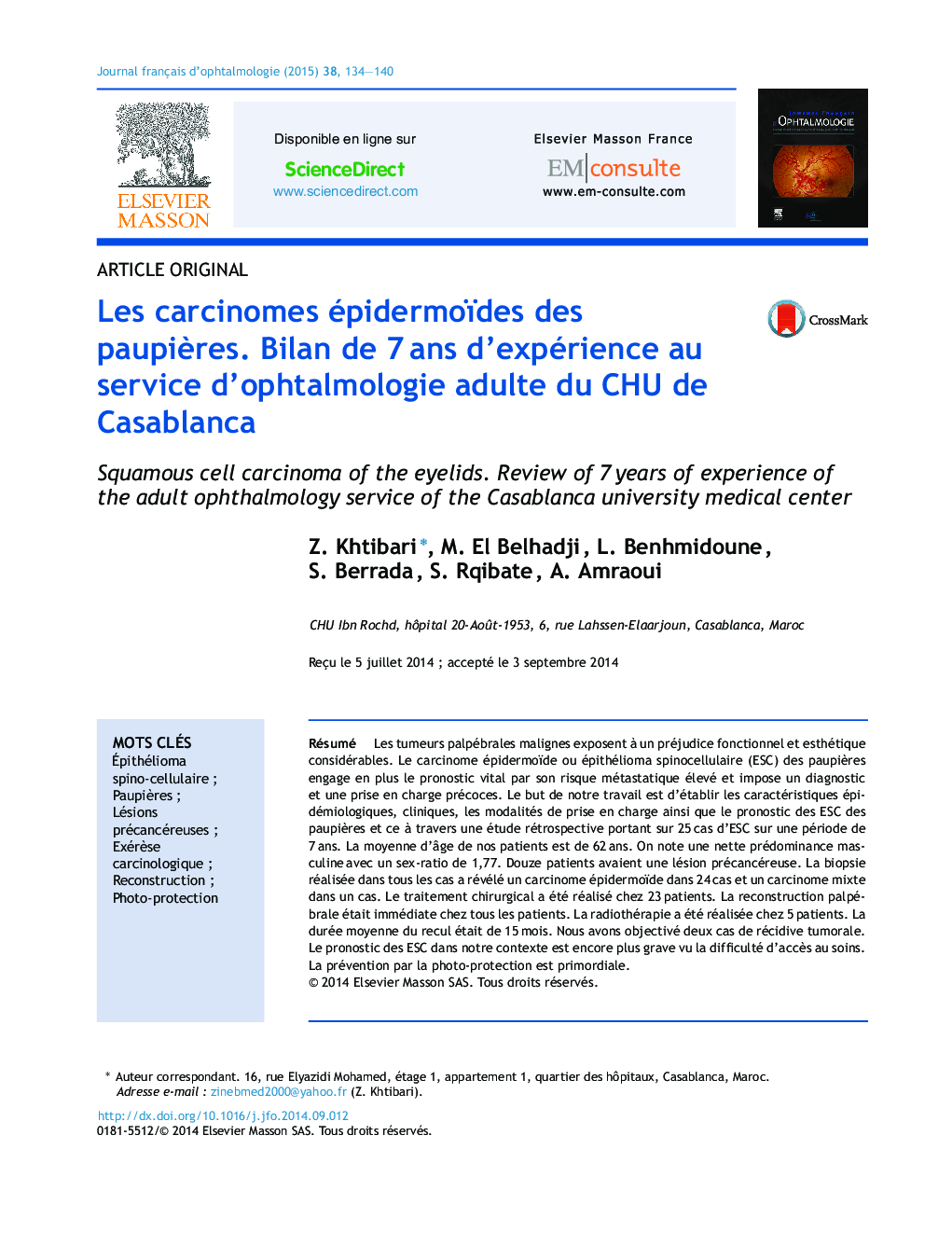| Article ID | Journal | Published Year | Pages | File Type |
|---|---|---|---|---|
| 4023633 | Journal Français d'Ophtalmologie | 2015 | 7 Pages |
RésuméLes tumeurs palpébrales malignes exposent à un préjudice fonctionnel et esthétique considérables. Le carcinome épidermoïde ou épithélioma spinocellulaire (ESC) des paupières engage en plus le pronostic vital par son risque métastatique élevé et impose un diagnostic et une prise en charge précoces. Le but de notre travail est d’établir les caractéristiques épidémiologiques, cliniques, les modalités de prise en charge ainsi que le pronostic des ESC des paupières et ce à travers une étude rétrospective portant sur 25 cas d’ESC sur une période de 7 ans. La moyenne d’âge de nos patients est de 62 ans. On note une nette prédominance masculine avec un sex-ratio de 1,77. Douze patients avaient une lésion précancéreuse. La biopsie réalisée dans tous les cas a révélé un carcinome épidermoïde dans 24 cas et un carcinome mixte dans un cas. Le traitement chirurgical a été réalisé chez 23 patients. La reconstruction palpébrale était immédiate chez tous les patients. La radiothérapie a été réalisée chez 5 patients. La durée moyenne du recul était de 15 mois. Nous avons objectivé deux cas de récidive tumorale. Le pronostic des ESC dans notre contexte est encore plus grave vu la difficulté d’accès au soins. La prévention par la photo-protection est primordiale.
SummaryMalignant eyelid tumors generate considerable functional and aesthetic complications. Squamous cell carcinoma or squamous cell epithelioma (SCE) of the eyelids represents about 9% of all peri-ocular skin tumors. It is potentially lethal by orbital invasion or metastasis and characterized by clinical polymorphism and its ability to mimic other benign lesions of the eyelids, thus requiring early diagnosis and management. The goal of our work is to establish the epidemiological and clinical characteristics, treatment modalities and prognosis of SCE of the eyelids. This retrospective study was performed over a period of 7 years on 25 cases of SCE of the eyelids. The mean age was 62 years. The gender ratio was 1.77 with a male predominance. Twelve patients had precancerous lesions. Biopsy revealed squamous epithelioma SCE in 24 cases and a mixed carcinoma in one case. Surgical treatment was performed in 23 cases. Eyelid reconstruction was immediate in all cases. Radiation therapy (RTH) was carried out for additional 5 patients. The mean follow-up was 15 months. We noted 2 cases of recurrence; revision surgery was necessary in one case and radiotherapy in the other case. SCE is often diagnosed at advanced stages in our context because of the limited access to health care and the extreme clinic polymorphism. This explains the need for histological examination of any suspicious lesion. Prevention through photoprotection is essential.
